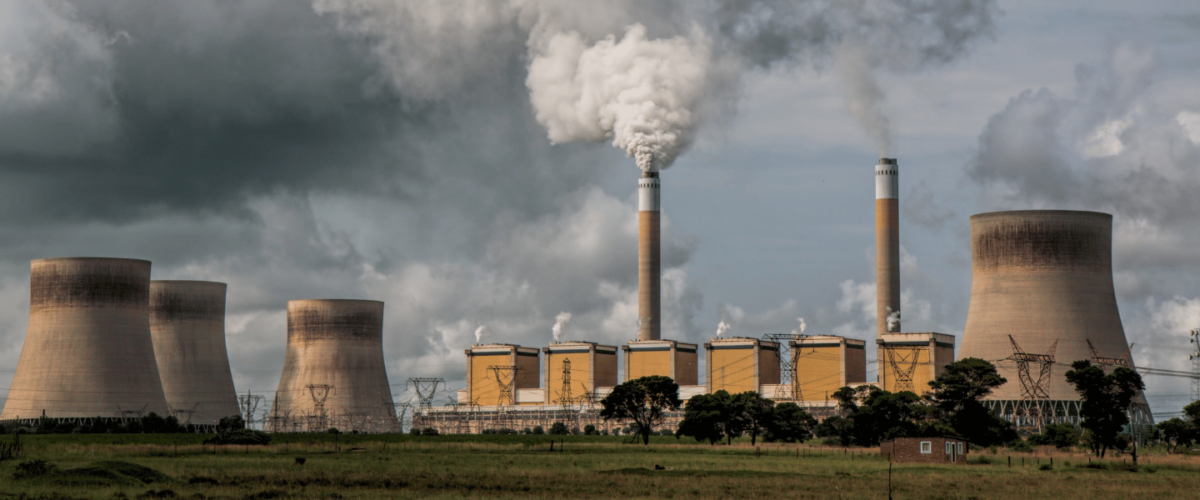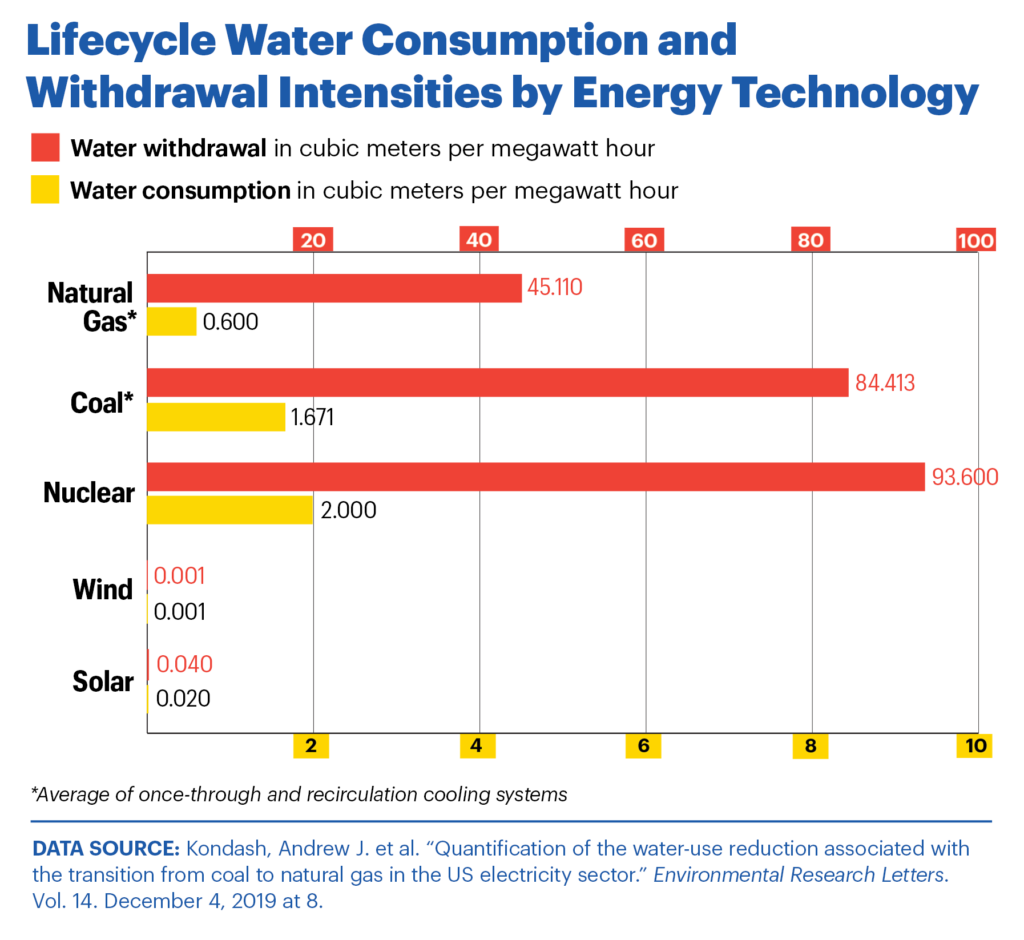Big Tech Wants to Bring Back Nuclear. It’s (Still) an Awful Idea.
Published Jun 26, 2025

Big Tech and nuclear boosters are pushing small modular reactors as a “climate solution.” But nuclear is a hazardous distraction from renewables like solar and wind.
Big Tech companies have big plans to ramp up their energy use, and they’re turning to nuclear power to support it. The industry is building more and more energy-hungry data centers — which enable everything from video streaming to the artificial intelligence (AI) boom we’re seeing on social media — across the country.
Partly to stick to their (already dubious) climate goals, tech companies like Amazon, Google, and Microsoft are joining nuclear developers to pursue small modular reactors (SMRs). Supporters claim SMRs are a “safer, cheaper” alternative to conventional nuclear plants. But this is incredibly misleading.
The truth is, small modular reactors pose many of the same risks as conventional nuclear power. They’re hazardous and expensive. If allowed to proliferate, they’ll likely raise energy costs and endanger already-marginalized communities.
Moreover, a nuclear build-out will distract from the development of real renewables, like solar and wind, which have already proven cheaper, safer, and much less hazardous than nuclear.
Nevertheless, developers are pursuing even more taxpayer-funded benefits to grow conventional nuclear and advanced nuclear technology. They’re partnering with governments and tech corporations to bring “small” modular reactors to our communities.
Here are four reasons we can’t let this happen.
1. SMRs Are Unproven and Understudied
Small modular reactors are smaller than conventional nuclear power plants. They’re built in factories in pieces that are transported and installed on-site. They vary in size and can be large enough to cover dozens of acres.
These reactors haven’t actually generated much electricity so far. Just three are operational globally, and none of them are in the United States.
Compare that to renewables like wind and solar, which have been developed for decades and are now cheaper than most other forms of power. Investing in unproven SMRs when we have better solutions right in front of us would be laughable, if the consequences for the planet weren’t so dire.
Learn more about small modular reactors in our recent fact sheet, “Going Nuclear in the Neighborhood.”
2. SMRs Don’t Solve the Problem of Nuclear’s Environmental Hazards
The United States has yet to solve the problem of nuclear waste, even after decades of running conventional reactors. Nuclear power produces radioactive waste throughout its lifecycle, from mining and enriching uranium to the spent nuclear fuel.
Currently, the U.S. lacks long-term storage options for spent fuel, and most is stored at reactor sites, which can lead to the release of radioactive materials. One 2011 investigation found that radioactive materials have leaked from at least 48 out of 65 reactor sites studied, with some materials even contaminating drinking water wells.
SMR deployment would create more nuclear waste, which we already have issues dealing with. It may even lead to a greater amount of spent fuel compared to conventional reactors.
Nuclear energy is also fully dependent on uranium, a heavy metal with a legacy of health and environmental harms. Studies have linked uranium mining to lung cancer in mine workers, and mining can contaminate nearby water sources with the radioactive metal. Uranium can also bind to agricultural soils and be taken up into crops.
Additionally, water-cooled SMRs are less efficient than their larger counterparts, meaning that they use more uranium to produce the same amount of energy. This results in more uranium mined, refined, and transported (each of which carries its own risk).
And in an increasingly water-stressed world, nuclear has much higher water needs compared to wind, solar, and even gas. At a time of drought and growing water insecurity in this country, we cannot afford to waste water on nuclear — especially when we have options that require orders of magnitude less water.

3. SMRs Will Put More Communities in Danger
It takes multiple SMRs to meet the power output of a single conventional reactor, bringing risks of nuclear disaster to more communities. And it’s quite likely that these risks will fall on communities already facing racism, classism, disinvestment, and disproportionate amounts of pollution.
Historically, undesirable facilities like nuclear reactors are more likely to be built in marginalized communities that lack political power. One study found that communities within the injection Emergency Planning Zone (50-mile radius)1Emergency Planning Zones are the areas around a plant that could be impacted by major incidents of a nuclear power plant had higher percentages of people of color compared to those living outside of this zone.
And it’s not just the impact of the reactors that is inequitable. SMRs still rely on uranium, which has a dark legacy of harming disempowered communities that work in and live near uranium mining operations.
4. SMRs Will Cost Us Big-Time
Small modular reactors are cheaper to build than larger reactors, but they’re more expensive per unit of electricity produced, as they can’t reach the same economies of scale. Modularity (mass producing individual components to be transported and assembled on-site) can make SMRs economically viable, but we haven’t seen that actually applied yet.
So far, we’ve only seen duds. The country’s first SMR project burned through 232 million taxpayer dollars before it was cancelled in 2023.
Nevertheless, the federal government has thrown its weight behind nuclear. The Biden administration called for tripling U.S. nuclear capacity to meet growing energy demand, driven in part by Big Tech. The administration approved a loan of up to $1.5 billion to restart a reactor in Michigan and expand it with two SMRs. Now, President Trump is furthering federal support for nuclear while slashing funds for solar and wind.
Some states are also pushing nuclear power. New York, for example, is supporting a developer’s proposal for an Energy Department grant, and it’s studying the possible role of nuclear in meeting state climate goals. Governor Kathy Hochul is advocating for SMRs while also courting tech companies to set up shop in the state.
With these overtures, New York officials are completely ignoring the state’s own history of being burned by nuclear power. In 1995, Long Island Lighting Company decommissioned a nuclear plant that had never even produced power, leaving New York ratepayers on the hook for $4.2 billion.
Similarly, in 2016, then-Governor Andrew Cuomo approved an $8 billion bailout for three aging nuclear power plants. To this day, New Yorker ratepayers — even those who didn’t use any energy from the plants — are covering the costs through higher energy bills.
Oppose SMRs, Oppose Big Tech — Support Clean, Cheap, Proven Renewables
SMRs are just another way for Big Tech to offload the costs of its business — from energy costs to toxic, radioactive waste — onto the rest of us. While communities deal with the fallout of new nuclear power plants, tech corporations will continue raking in cash. And they’ll take it directly from us through taxpayer subsidies and higher energy bills.
Moreover, if our government continues to support nuclear power, it’ll distract from efforts to build safer renewable sources like wind and solar, which have already proven themselves less expensive and more reliable. It’s time to nip this in the bud, oppose Big Tech’s nuclear schemes, and push for a truly renewable future.
Food & Water Watch exposes the truth behind corporate hype, so we can better fight for our livable future. Sign up to get our latest updates in your inbox.
Enjoyed this article?
Sign up for updates.
TO TOP
Endnotes


